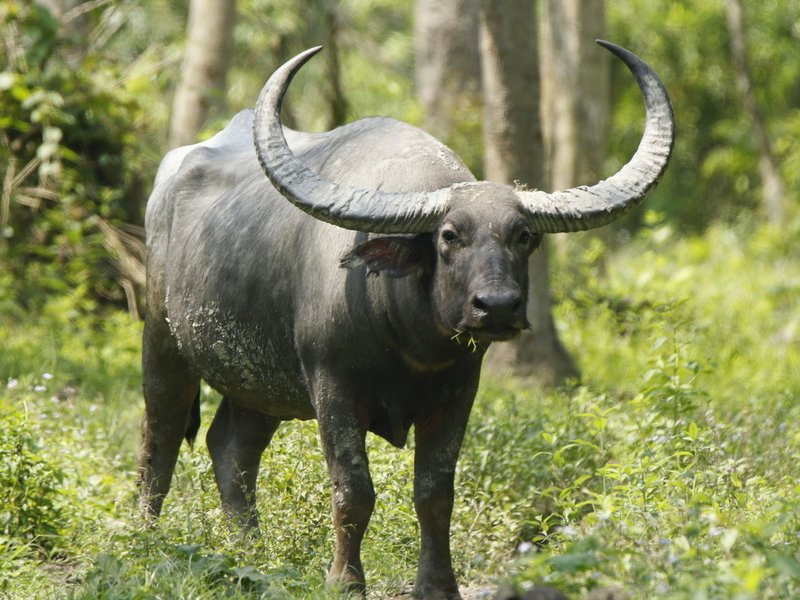
Water buffaloes are usually gentle giants, but they can be unpredictable if they feel threatened. Just like navigating a strange city, it’s vital to know what to do when you find yourself face-to-face with one of these powerful animals. Let’s break down the best steps to take if you ever encounter a water buffalo in the wild.
Understanding Water Buffalo Behavior
Before diving into what to do during an encounter, it’s essential to get a little background on water buffaloes. These animals are social creatures often found in herds. They thrive near water sources, which is why you’re likely to spot them near wetlands or rivers.
Water buffaloes can vary in temperament. Generally, they’re peaceful, especially when not provoked. However, if they feel threatened—like when a human is too close—they might react defensively. Imagine how you’d feel if someone entered your personal space—you’d want to protect yourself too!
Recognizing Signs of Distress
It’s crucial to pay attention to their body language. Here are some signs that a water buffalo might feel uneasy or threatened:
- Head position: If their head is low and they’re staring at you, they may be getting defensive.
- Snorting: A snort can signal that they’re agitated.
- Charging: If they start to move towards you quickly, it’s time to pay serious attention!
Understanding these signals can be key to keeping yourself safe.
Stay Calm and Assess the Situation
So, you see a water buffalo! What now? First and foremost, try to remain calm. Panicking can lead to rash decisions. Take a moment to assess the situation. Is the buffalo alone? Are there others nearby? Understanding the dynamics can help you figure out your next steps.
If the buffalo seems relaxed and is grazing, you might have a bit of time to figure out your escape plan. However, if it looks agitated, it’s a different story. Here’s the thing: acting calmly can often help defuse the situation.
Making Your Exit
If you need to move away, do so slowly and carefully. Quick movements can startle the buffalo, which can escalate things. Back away while keeping your eyes on the buffalo without making direct eye contact. This way, you’re aware of its movements, and it won’t feel like you’re challenging it.
Remember, if you’re in a group, it’s best to stay together. Creatures like water buffalo can be more intimidated by larger groups, and they may be less likely to approach.
Finding Shelter and Safety
If you realize you’re in a vulnerable position, look for nearby shelter. This could be a tree line, a building, or any natural barrier that can provide some safety. If you’re close to a vehicle, getting inside can offer a secure spot from which to observe the buffalo.
It might feel a bit like a game of hide-and-seek. You’re looking for a safe place while the buffalo moves about. Once you’re out of immediate range, take a moment to breathe and assess the animal’s behavior from a distance.
Understanding the Environment
When encountering a water buffalo, it’s essential to understand your surroundings. Are you in a national park where these animals are known to wander? Or are you near a local farm? Knowing the lay of the land can assist in effective decision-making. If you’re in a park, there may be park rangers nearby who can guide you.
Additionally, having a map can be beneficial. Whether you’re navigating a national park or just exploring nature, knowing where you are can help you find your way back to safety if needed.
What to Avoid When Encountering a Water Buffalo
You might wonder, “What should I definitely NOT do?” Here’s a quick rundown:
- Don’t approach: This is not the time for a selfie. Keeping your distance is key.
- Avoid sudden movements: Quick actions can provoke a buffalo.
- Don’t feed them: It’s not just unsafe; it can alter their behavior and make future encounters hazardous.
Keeping these points in mind can help ensure your safety and that of the animal.
When All Else Fails: Calling for Help
Okay, let’s say you’re in a tough situation where you feel threatened but you can’t safely move away. This is when you need to reach out for help. If you have your phone, call local wildlife authorities or park rangers. They’re trained to handle these situations and can provide assistance.
Even if the buffalo is just grazing peacefully, it’s important to alert authorities. They might be able to manage the situation better or provide guidance on what to do next.
Documenting the Encounter
If it’s safe to do so, consider taking notes or even photos (from a distance) of the encounter—especially if it’s a unique situation in a national park. This can be valuable for conservation efforts or just for your personal records.
When you document, try to include details such as the buffalo’s behavior, the time of the day, and the surrounding environment. It’s like keeping a nature diary—who knows, your experience could help someone in the future!
Wrapping Up Your Encounter with a Water Buffalo
Encountering a water buffalo in the wild can be an unforgettable experience. The key is to stay calm, be aware of your surroundings, and understand how to react if you find yourself face-to-face with one. This gentle giant, while often peaceful, deserves your respect and caution.
By recognizing their behavior, remaining composed, and knowing when to seek help, you can navigate this situation safely. Whether you’re hiking, exploring, or just enjoying nature, having this knowledge can enhance your outdoor adventures. Remember, every adventure comes with its lessons—even the unexpected ones!

